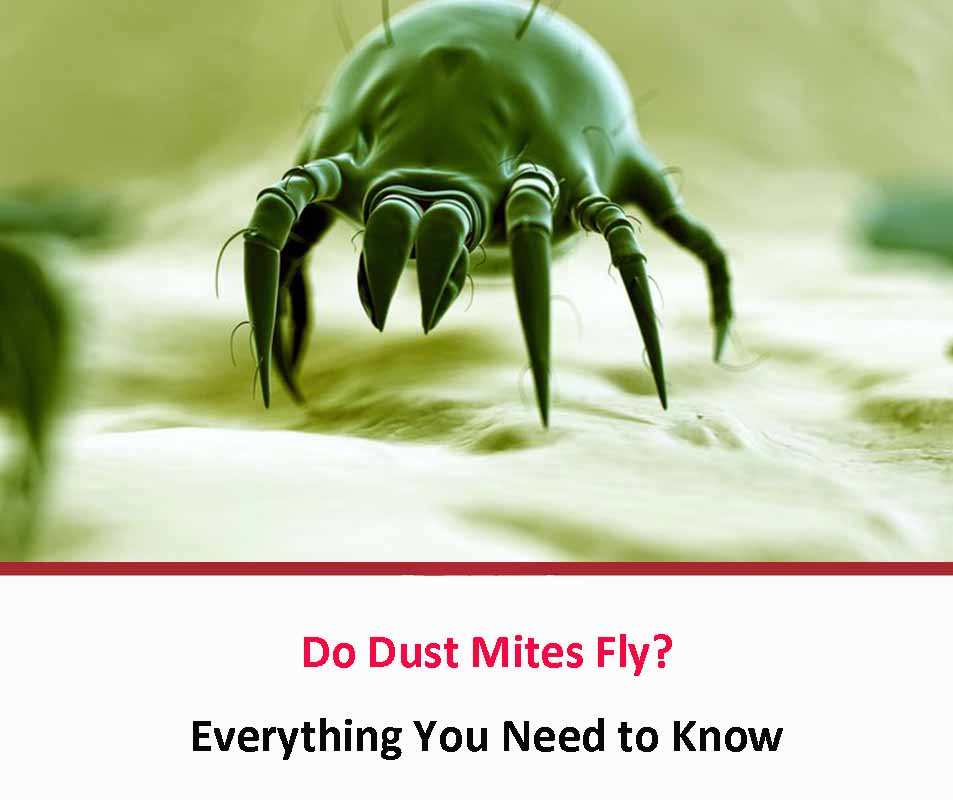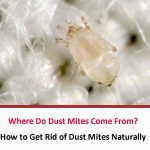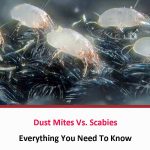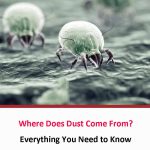Dust mites can create a great nuisance in your house, especially to you and your loved ones. These microscopic pests are not visible to the naked eye and usually feed on dead skin cells or organic materials.
Also, you should know that these insects can trigger allergy and asthmatic problems, which can deter your overall health. Most of you might be wondering dust mites can fly.
Read on to know more about dust mites so that you can deal with them appropriately.
Do Dust Mites Fly?
Contents
- 1 Do Dust Mites Fly?
- 2 Do Dust Mites Jump?
- 3 What Color Are Dust Mites?
- 4 Do Dust Mites Bite?
- 5 Should You Worry About Dust Mites?
- 6 What Causes Dust Mites?
- 7 What Do Dust Mites Eat?
- 8 Can You See Dust Mites?
- 9 Can Dust Mites Live In Your Clothes?
- 10 Can Dust Mites Live In Your Hair?
- 11 Where Do Dust Mites Live?
- 12 What Kills Dust Mites Naturally?
No. These creatures are not visible to human eyes, which means it is hard for you to suspect the infestation unless you experience allergic symptoms. In addition, recent studies have shown that dust mites are too heavy to float in the air for a long time.
But you should know that their fecal matter can quickly become airborne and travel into your lungs. Researchers have found that the allergen particles can easily float in the air for at least two hours.
Do Dust Mites Jump?
As you already know, dust mites are found everywhere in the world. These microscopic pests prefer to live in humid and hot climates. However, they can also live deep inside the cloth fibers and move along with you on a business trip or vacation.
Since dust mites are microscopic, it is hard to see if dust mites can jump or not. According to the researcher, they cannot fly, but their fecal matter can become airborne. That apparently states that dust mites cannot jump.
What Color Are Dust Mites?
These tiny microscopic adults are only visible to the naked eye with the help of a microscope. However, you should know that these pests have globular shapes, hairs, legs and are creamy-white.
Do Dust Mites Bite?
No, dust mites don’t bite as they do not have cutters to penetrate through skin layers to feed on your blood. You should know that they feed on dead skin cells and other organic matters. However, they might spread some allergic reactions, which can cause symptoms like coughing, sneezing, etc.
Should You Worry About Dust Mites?
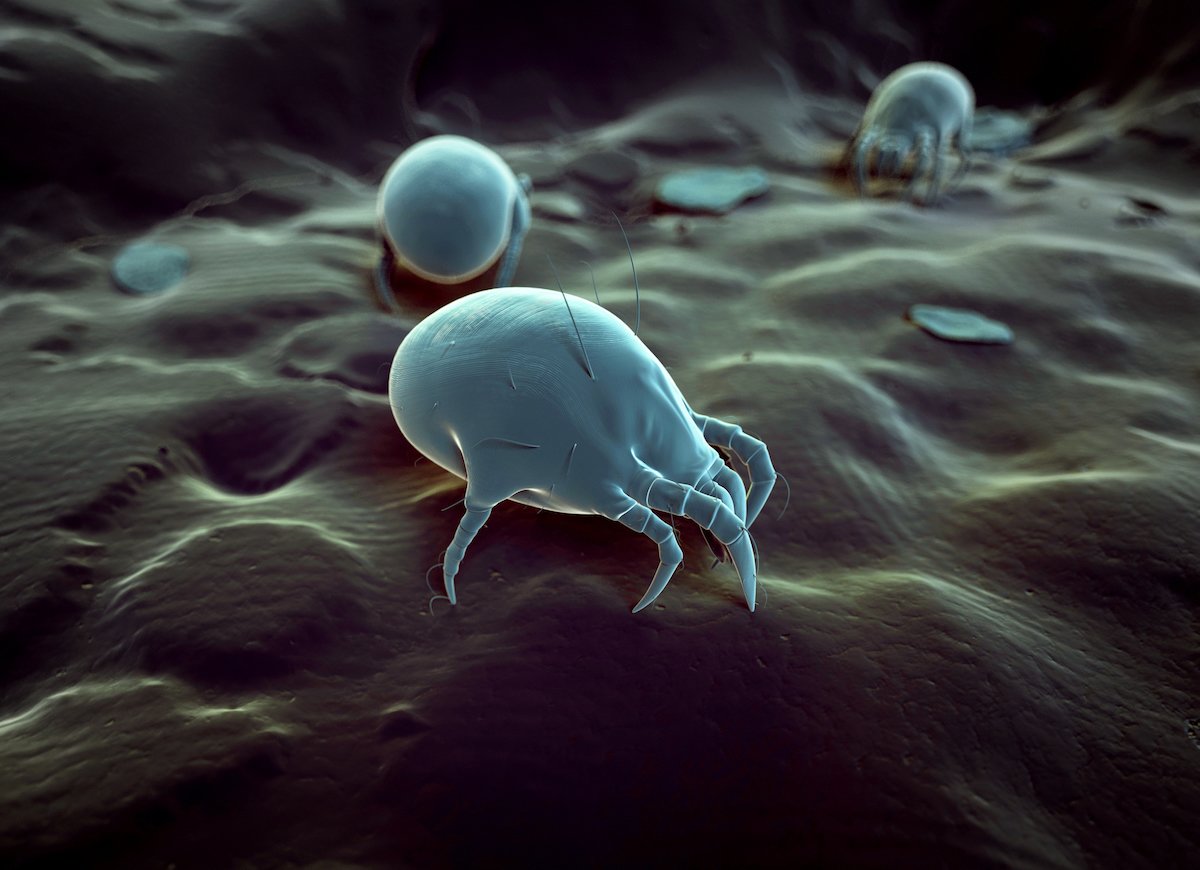
Well, they don’t deter human health immediately, but they pose some threat to the overall health of a human being as they produce allergen particles, which can cause allergic symptoms in some people.
You should know that every household considers replacing their infested slipcovers, mattresses, and pillows regularly to prevent dust mites from growing.
What Causes Dust Mites?
The leading cause of dust mite’s infestation is providing them a suitable atmosphere for thriving. Dust mites survive on dead skin cells usually shed by humans and are likely found in humid, warm environments. These places include carpets, beddings, mattresses, and upholstered furniture. That means when you suspect an infestation, you should consider taking preventive measures to stop them from growing.
What Do Dust Mites Eat?
As already mentioned, dust mites don’t fall into the category of blood feeders like other small insects or pests; they feed on various components of house dust like cotton fibers and dead skin cells of humans and animals.
That’s why they are primarily found in bedding, mattresses, and carpets, as these are the perfect source for getting food supplies.
Can You See Dust Mites?
Usually, dust mites are not visible to the naked eye as they only measure 0.05mm in size and have a translucent body. That means you can only see them through a microscope. These pests have an oval-shaped body with eight legs.
The only one can suspect the infestation if they seem to have frequent symptoms of allergy-like sneezing, coughing, runny nose, etc. According to researchers, you will see a pile of dust mites scuttling around one another.
Can Dust Mites Live In Your Clothes?
Yes, dust mites can live in your clothes as long as they are easy to burrow down deep inside and hold the moisture well. Apart from this, you can also find them in your pillows, beddings, curtains, soft furnishing, and carpets. You should know that dust mites don’t drink water because they absorb it from the moisture around them. That means your clothes might get infested with dust mites after being stored for too long in your closet.
So, it would be better to consider washing your clothes or steam cleaning to eliminate most of the dust mites. Recent studies have shown that dust mites cannot survive over 130 degrees, which is hot enough to kill time.
You can wash your clothes to get rid of fecal matter and skin particles to prevent further infestation.
Can Dust Mites Live In Your Hair?
No, dust mites cannot survive in human hairs as these microscopic creatures need a suitable environment for a humid, warm environment. That means human hairs cannot provide them both, making it unsuitable for dust mites to live in your hair.
Where Do Dust Mites Live?
Thousands of dust mites can live inside the carpets, upholstered furniture, mattresses, bedding, and even curtains inside your house. As you already know that they feed on dead skin cells present in dust.
You should know that these microscopic creatures are not parasites, which means they don’t sting, bite or burrow into human bodies.
Also Read: How to Get Rid of Dust Mites Naturally
What Kills Dust Mites Naturally?
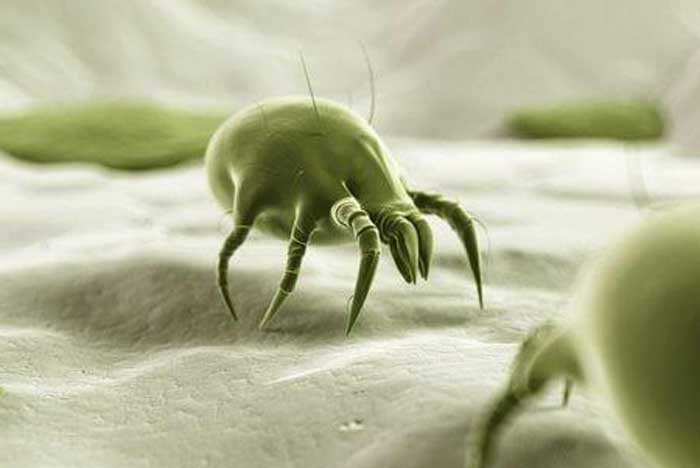
When it comes to killing dust mites, there are many ways to eliminate most of the population. But you should know that eliminating the dust mites is quite impossible, but there are some natural ways that you can use to reduce them significantly. So let us discuss those top proven ways to deal with dust mites.
- You can make use of anti-dust mite beddings as these are tightly woven covers that trap the dust mites inside and keep them from lurking out or in.
- Another natural way to deal with dust mites is to diatomaceous earth. It is the most effective powder that wicks away the moisture and keeps the bugs dehydrated, and eventually, it kills them. All you have to do is sprinkle the powder over the bug-infected area and leave it for 30 minutes, then vacuum it thoroughly.
